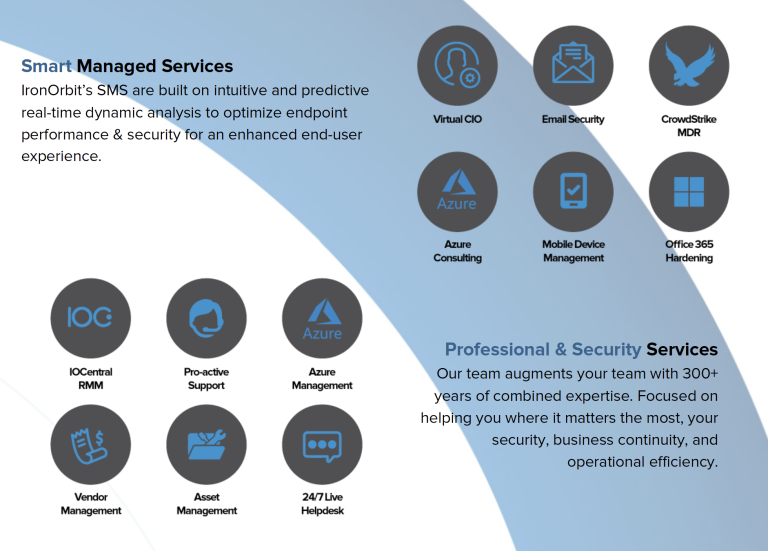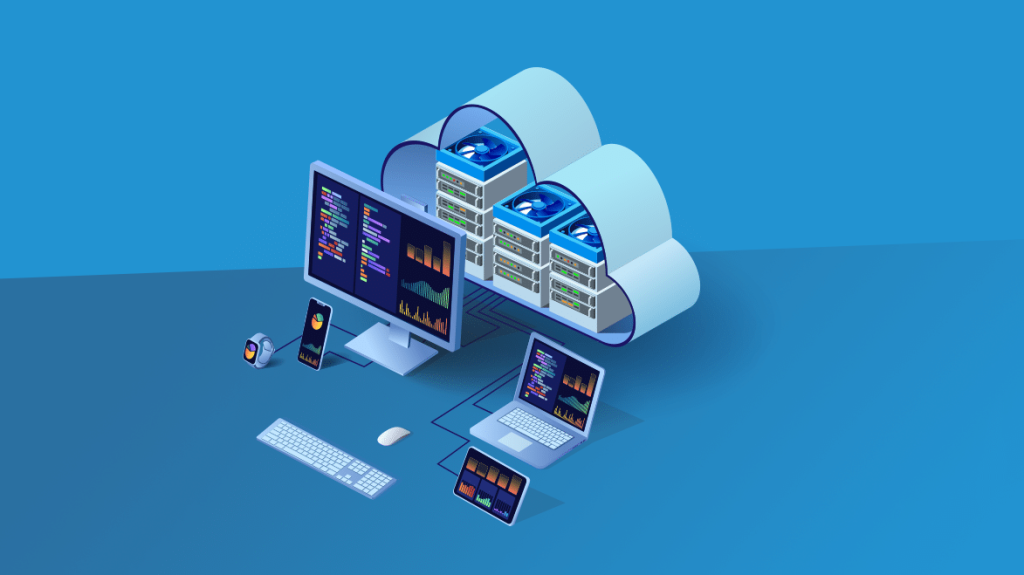
Businesses will have to include resiliency planning as they venture forward.
THE SHAPE OF THINGS TO COME: SOME THOUGHTS ABOUT THE NEW – NEW NORMAL
It surprised me. The first time that I heard a news broadcaster use the words “the new normal” in reference to the post COVID time frame made me stop and think. Here was a term first used following the financial crisis of 2008 and it’s aftermath. Until then, I was expecting everything to go back to how we had always known it.
I thought about it. I realized that the newscaster was right. COVID-19 has changed the way we do business – and life – forever. In the midst of the current COVID-19 pandemic, many facets of the way we do business have shifted. Daily, we see our lives become more confined. The uncertainty of it all restricts us in many ways. It is too early to tell what all the permanent business ramifications will be. But there is change in the air. One thing is certain. This situation will expose corporate weaknesses and strengths. How the story unfolds for your business depends largely on how you navigate the waters ahead.
Look at the current impact of the virus on business operations. It’s clear that the shift toward the “new normal” has caused the adoption of certain technologies sooner and faster than ever expected. Here are 6 ways technology trends have changed for better or for worse.
What Has Coronavirus, and Our Reaction to it, Changed in Business Forever?
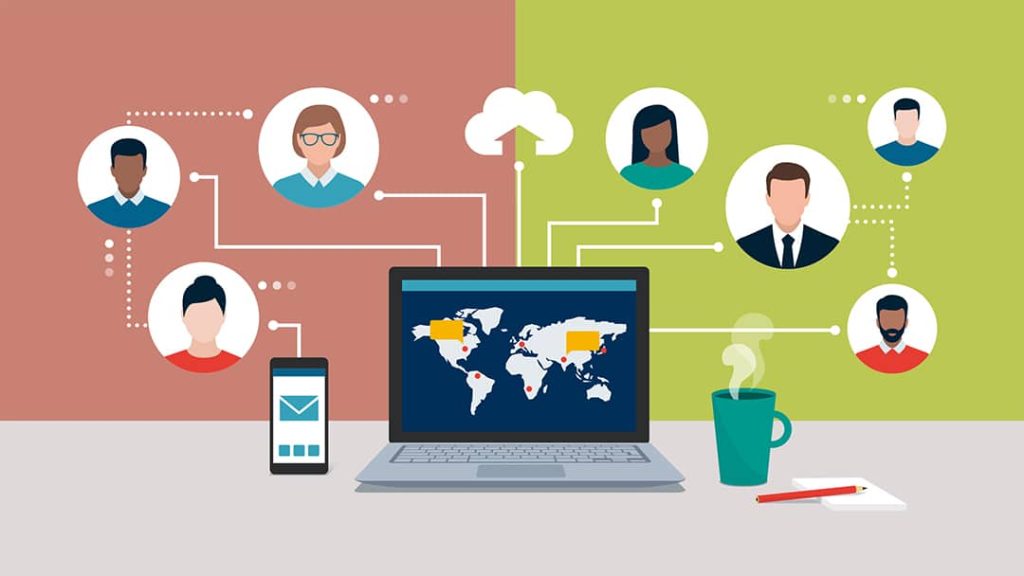
Online collaboration tools such as Microsoft Teams enables people to connect from home, from the office, or anywhere else.
1. The way businesses view and handle remote workers has changed.
In this article from MarketWatch, we see some business benefits of allowing employees to work from home, such as taking advantage of a more diverse talent pool and flexibility in labor costs.
A great number of employees now working from home. They’ve been working from home for a prolonged period of time. Many companies will have to make adjustments and accept remote workers. Being able to transition to a home or remote office when problems arise will be the new normal. The bonus: the flexibility allows for a more productive and capable workforce.
Tool and technology that’s ready to go in either environment is a great way to support your team. It encourages autonomy and collaboration among teams. Get the job done, regardless of location. That’s the new normal.
· Zoom or Microsoft Teams are cloud-hosted communications tools that allow for adhoc web meetings among different groups.
· Trello is a great way for companies to work together on projects, allowing for integration into other subscription-based business apps like Google drive or Dropbox for sharing.
· Slack is an attractive alternative to email, allowing single or team-based conversations that are searchable.
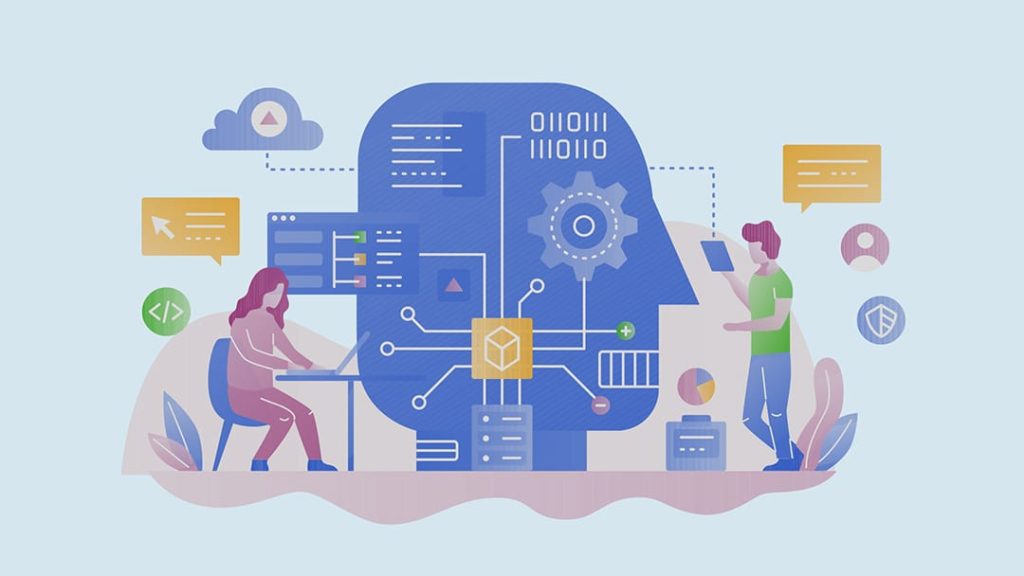
Machine learning models may be mislead because of unusual spending habits during a pandemic, but they might play a key role in mitigating the fallout from this pandemic. They’ll definitely minimize the impact of the next.
2. The way businesses view and use artificial intelligence has changed.
Another trend that has been gaining more traction is the use of artificial intelligence (AI), specifically, machine learning. Being able to mine through the copious amounts of data we have on coronavirus is helping scientists and researchers find answers quicker than ever.
The use-case for machine learning (ML) is not limited to scientific research. Imagine being able to accurately forecast sales data. Or what if you could have a chatbot that could answer customer service inquiries 24/7 from your website?
ML has deep roots in cybersecurity. ML has the ability to analyze network traffic and detect anything seen as malicious. Many of the latest security tools incorporate AI/ML. They are able to learn the current cybersecurity posture of business systems. They can proactively combat malware threats.
The first step for a company is to vet, implement, and accept machine learning. This could be for a specific task or to provide general support to a department. Once this happens, the doors to advance technology swing open. The power of ML to benefit a company become apparent.
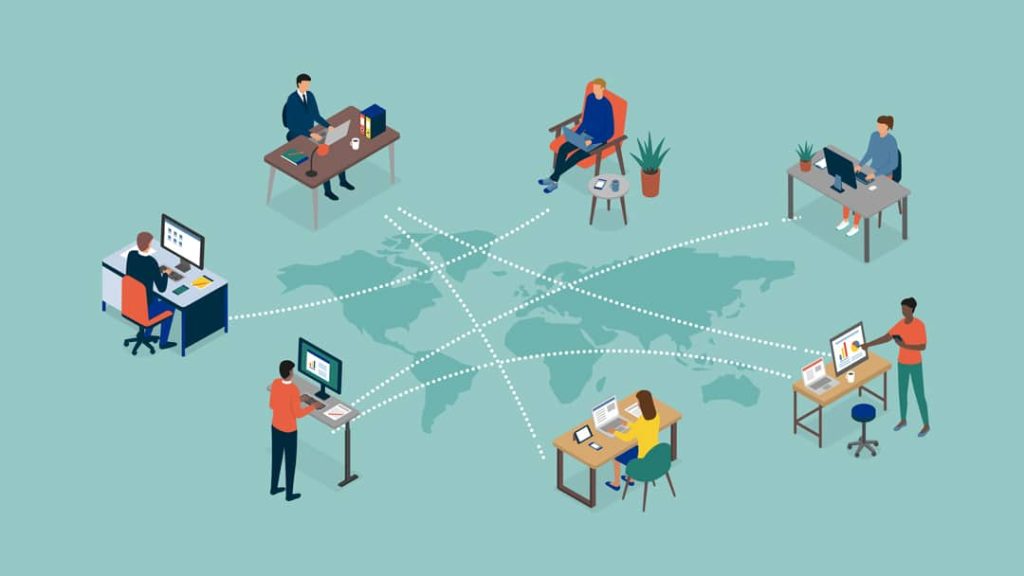
Cloud technology has brought stability and flexibility to a world lacking both. Web-based platforms and services continue working without getting overwhelmed by the sudden rise of people going online to do business, work, or play.
3. Acceptance of the public cloud infrastructure has changed.
With COVID-19 forcing businesses to rely on the cloud, company leaders that were once wary of public cloud infrastructure are now embracing it.
A recent CRN post reports cloud computing have enabled companies to scale business applications. And they’ve been able to do it reliably. Thanks to the minds behind Google, AWS, and Microsoft Azure, rapid scaling has been virtually trouble free.
Microsoft Azure alone has reported a 775% increase in usage of cloud services like Teams, PowerBI, and Windows Virtual Desktop.
Relying on a proven infrastructure is good. Doing it without managing physical server hardware is even better. It is more critical now than ever before.
Businesses that use a cloud infrastructure can scale back without incurring unneeded costs. If they are in a current downswing.
Remote work, SaaS applications, and Cloud Infrastructure are in high gear. The COVID-19 crisis will cause these trends to gain more traction and use. Companies will scale their services and solutions. Those that wing themselves from on-premises infrastructure will have the advantage. They may even elect to downsize physical office buildings. Or not. Having the choice is also an advantage.
The changes to business and technology brought on by COVID-19 are here to stay. There are significant business benefits from this course adjustment. The adoption of cloud-based technologies is one of them.
· The ability to work from wherever is convenient and productive.
· The capacity to deliver a solution that is always available – regardless of business demand or outside factors.
· The freedom for a company to better align with its employees and customer needs.
4. The competitive edge and viability of companies has changed forever.
People are forced to stay home more. They don’t want to risk exposure. They become reliant on delivery services like Door Dash, PostMate, and InstaGuard to get food and supplies. Streaming services like Netflix and Amazon Prime are bigger than ever.
Who is losing out?
Restaurants by the thousands will struggle to climb out of the COVID-19 trauma. Some won’t make it. The franchise chains will. Cinema theaters across the country are currently closed, and some of them will not reopen. This will have an impact on how movies are exhibited. It will also impact what types of feature films are developed and financed. Fewer studios will be willing to take the risk of financing blockbuster movies. This is especially true of disaster movies. These are the movies that cost hundreds of millions of dollars to make and market.
One night in early April, the Governor of New York summed up the problem, “The simplicity of it is so what makes it so tragic. Because we don’t have a piece of equipment somebody is going to die? How did we get to this place? In this county. We have to buy all our supplies from China? I can’t get protective equipment because China is making it? China is making the ventilators?”
But it’s not just medical supply chains that are being reconsidered. The coronavirus pandemic will also have long term effects on the tech hardware industry.
Parts needed to assemble various hardware and electronic products come from a multitude of sources. Most of them are overseas. A factory that makes television monitors doesn’t necessarily make the screens. The processing chips are made at a different factory. The power supply might be made at yet another factory. It’s all interconnected. If one factory is shut down, it impacts all the others down the line.
The entire system can grind to a halt. Having a supply chain that involves multiple nations like the United States and China will most certainly be re-evaluated. It’s better to have all the needed components of a particular name brand product to build closer to home. This will kill some tech manufacturing firms and enrich others.
The use of AI automation is going to make it more attractive for manufacturing to come back to the USA. That will shorten the length of supply chains while ensuring their security.
Apple’s already indicated that it won’t be able to make a sufficient supply of its Smartphones for the year. That’ll be true of other smartphone makers…some won’t make it. It has already begun.
The is Irony is that a virus that originated in China is ultimately helping China’s economy to bounce back. China has the capacity to manufacture much of the equipment needed in other parts of the world, including our own. Long term, many companies are going to be looking at diversifying their supply chain. They’ll avoid putting all their eggs in one basket.

What ever shape the new normal takes, remote work will definitely remain part of the picture.
5. Everyone in the company working in and from one building – or any company-owned building – has changed forever.
In an April 20th Fast Company article, several enterprise CEOs and influencers, including Jared Spataro (corporate vice president, Microsoft 365), agree that working from home and increased video conferencing will become the new normal.

Jared Spataro is the Vice-President of Microsoft 365.
Jared Spataro is quoted as saying,“This time will go down as a turning point for the way people work and learn. We have a time machine as China navigates its return back to work—and we’re not seeing usage of Microsoft Teams dip. People are carrying what they learned and experienced from remote work back to their “new normal.” We’re learning so much about sustained remote work during this time.”
Business is not the only place where “from home” situations will continue well after COVID-19 has been conquered. Education is another sector that has changed forever. But what about all those families that don’t have basic access to the Internet at home? School shutdowns requiring students to take online courses widen the socio-education disparity in our society.

Sal Khan, founder of Khan Academy.
Sal Khan, founder and CEO of the educational nonprofit Khan Academy, said, “The need for online access and devices in every home is now so dire that it may finally mobilize society to treat internet connectivity as a must-have rather than a nice-to-have. We’re already seeing governments, school districts, philanthropists, and corporations step up to close the digital divide. If this continues to happen, we could get to a state of nearly universal online access at home.”
Sal Khan’s prediction is already happening in Singapore where universal Internet connectivity is nearly 100%. Universal Internet connectivity in Singapore is part of their Intelligent Nation 2015 and Smart Nation initiative. In August 2018, Ookia’s speed tests determined that Singapore’s broadband speed of 181.47 Mbit/s is the highest in the world.
6. Our view of reliance on a single revenue stream – as a business and as individuals – has changed forever.
Will Lopez, head of accountant community at HR platform Gusto put it all into perspective when he said,
“This won’t be the end of brick-and-mortar store. Just as it won’t be the end of the digital cinema theater. These are important businesses. They help form the social fabric of our communities. But retail shops and restaurants will change the way they operate. The crisis has reminded people that they need to remain agile. It has reminded us to move with the times. Don’t be stuck with the old way of doing things.”
Where many of these shops have historically relied on foot traffic. These same shops will now develop ways to create alternative streams of revenue. For example, many restaurants will link up with delivery service platforms. They’ll expand their geographic reach. More boutiques will develop an online presence that reaches beyond their local neighborhoods.”

Business leaders are too busy struggling to keep their operations going to wonder what the new normal will be like. We’ve got to get through this first.
IN CONCLUSION
The “new normal” will mean most companies will stall. Many will go out of business. The ones that do survive must continue to optimize the way they operate. They will have to rethink their business models moving forward. Supply chains have been disrupted. For many this experience has been a painful lesson. Companies will respond. They’ll have to. They will strengthen whatever back-up plans they have in place. If there are none. They will have to build them from scratch. This includes expanded work-at-home capabilities for more employees. They’ll have to consider options. Then they must position themselves to take advantage of those options.
New resiliency metrics will be rolled into valuations along with climate-related risks. The whole concept of resiliency will have the same importance as cost and efficiency. Resiliency is no longer a nice to have, but a necessity.
Individuals, communities, businesses, and governments are learning new ways to connect. Business leaders are finding faster, cheaper ways to operate. Conferences and meetings happen on online. Everybody that can has been working from home. These are positive changes. Better management. A more flexible staff.
Can we create a next new normal? One that will be better than what it replaced? Can we become agile enough to move even as the situation moves? Can we learn to address the challenges positively. These will be a long-term questions for us all.
What innovations will there be to leverage?
What technologies will business leaders use to thrive in the “new normal?”




